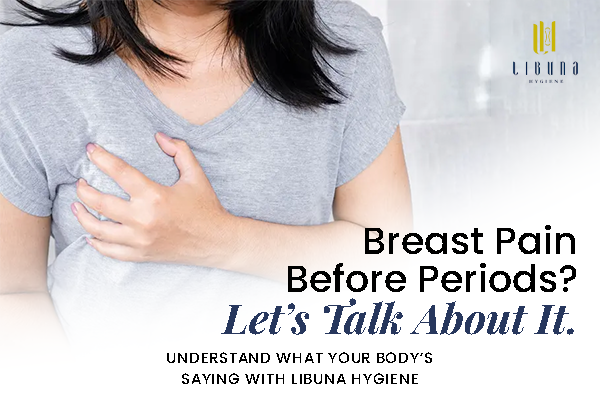Breast Pain and Periods: What’s Normal and When to Worry
Breast pain is the most commonly faced issue by women at some point in their lives. It's medically known as mastalgia, and is experienced by approximately 70–80% of women. Mastalgia is usually not harmful, but recognising its natural patterns (particularly concerning the menstrual cycle) can help determine when breast discomfort is typically normal or is symptomatic of something requiring medical assessment. In this Blog, we will learn about the types of pain, the intensity and when to worry and take action.
Cyclical (Hormone‑Related) Breast Pain
This is the most typical type, which is also referred to as cyclical mastalgia. Hormonal changes during the luteal phase- generally 3-10 days before your period- create swelling, tenderness or heaviness in breast tissue. Estrogen enlarges ducts, progesterone affects milk-producing glands, and fluid retention is responsible for discomfort.
Studies show:
-
40–70% of mastalgia cases are due to cyclical pain.
-
About 69% of women report regular premenstrual breast pain, with 11–22% experiencing moderate to severe discomfort.
-
Symptoms usually resolve within a couple of days of the menstrual flow.
This type of pain is bilateral, mild to moderate, and fluctuates with the cycle. It rarely signals serious illness and often lessens by menopause.
Non‑Cyclical (When to Be Alert)
When breast pain is constant, localised, or only in one breast, it may be non-cyclical and stem from non-hormonal causes such as:
-
Fibrocystic breast changes
-
Cysts or infections
-
Muscle strain or poor posture
-
Certain medications (like HRT or SSRIs)
While breast pain alone rarely indicates cancer (accounting for just 1–7% of cases), persistent or unusual symptoms must not be ignored.
When to Seek Medical Advice
You should consult a doctor if you notice:
-
A new or persistent lump
-
Nipple discharge, redness, or skin dimpling
-
Pain that continues even after your period
-
Severe pain that disrupts daily life
💡 Relief & Treatment Strategies
For most women, simple solutions provide great relief:
-
Over-the-counter NSAIDs (like ibuprofen)
-
Wearing a supportive, well-fitting bra
-
Reducing caffeine, salt, and smoking
-
Try warm compresses or gentle massages
-
Including vitamin E, evening primrose oil, or dietary adjustments
If the pain is severe, some women benefit from hormonal regulation under medical supervision.
For a Better Period Experience, Choose Libuna
While breast discomfort is mostly hormone-based, when you add in your PMS experience—cramps, mood swings, fatigue, tenderness to the breast—that’s a whole lot to deal with. That’s where your period care products alleviate the process.
Libuna’s Anion Chip Sanitary Pads meet today’s menstrual needs.
Here’s how they help:
-
Anion Strip Technology: Helps with pH balance and supports antibacterial protection.
-
Breathable Top Layer: You stay dry and irritation-free—essential if your skin is sensitive to begin with.
-
High Absorbency: Fewer changes mean fewer interruptions on difficult PMS days.
-
Rash-Free Comfort: And when your body is already feeling sore (like breast pain), every little bit of softness helps!
Conclusion:
Breast pain around your period is common—and usually manageable. But if it’s persistent, one-sided, or affecting your daily life, don’t hesitate to get checked. Meanwhile, support your cycle with a brand that understands it deeply. Choose Libuna. Choose Better Periods.







